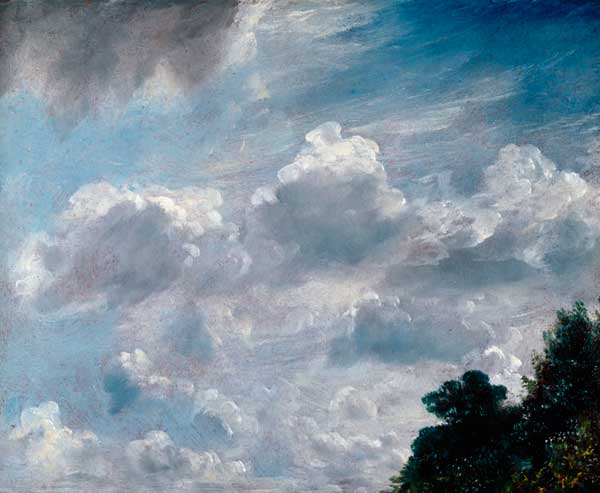One of the pleasures of the critic’s life is to review exhibitions of work by artists who have been forgotten or overlooked, and to recommend them for general attention. I know some arts editors are only interested in fashionable or mainstream artists, but I’m happy to say that The Spectator’s editorial policy is altogether more wide-ranging. Hence this review of the unjustly neglected Randolph Schwabe (1885–1948), an artist who believed in the value of classical draughtsmanship, which he promulgated through a lifetime of teaching. German by origin (his cotton merchant grandfather settled near Manchester), he trained at the Slade, then studied in Paris and travelled in Italy before returning to England. He taught drawing at Camberwell, was appointed Drawing Master at the Royal College of Art under William Rothenstein, and in February 1930 succeeded the great Henry Tonks as Professor and Principal of the Slade, a post he retained until his death.
Schwabe was thus in a position to influence a generation of students, while continuing to enhance the Slade’s reputation for brilliant draughtsmanship. Among his friends and colleagues were Charles Rennie Mackintosh, Albert Rutherston, Muirhead Bone and Allan Gwynne-Jones. Schwabe was a scholarly artist, though not a boring one, yet the selection of his paintings, drawings and prints at the St Barbe Museum is disappointing: not nearly as stimulating or revealing as I’d hoped. Perhaps this is because it relies too heavily on loans from the artist’s family, which tend inevitably to be things that remained unsold at the artist’s death, and therefore not always the best. The show, not hung chronologically, also feels slightly muddled.
Undoubtedly Schwabe spent too much time and energy as an arts administrator and not enough on his own work, but I have seen sufficient examples elsewhere to indicate that he is a more substantial artist than this exhibition suggests. That said, there are good things to be seen, including his powerful war paintings — particularly those from the first world war, familiar to visitors to St Barbe’s Women’s Land Army exhibition in 2008, reviewed in these pages — and his early etchings.
Some of the finest works are those borrowed from public collections, and tend to be landscape or architectural subjects: ‘Near Worth Matravers’, the watercolour and a pencil study for it, both from The Hunterian, University of Glasgow; ‘Oxford in the Full Moon’ from the Ashmolean; and especially the wonderfully crisp ‘Farm Carts, Lanteglos’ from the British Museum.
Schwabe was not only supremely handy with a pencil, he also worked well with pen and wash, and with the varied resources of black chalk. Line and shade were his great strengths, not colour, and his watercolours often look scarcely tinted, inclining more to sepia. With these skills, it’s no surprise to learn that he was a successful illustrator — eight large drawings for Somerset Maugham’s Of Human Bondage are in a rear gallery — but I wanted to see more of his paintings and best drawings. The exhibition is accompanied by an authorised biography of the artist by Gill Clarke (Sansom & Co, softback, £25), which draws heavily on letters and diaries, releasing a mass of Schwabe information into the public domain. A monograph on the artist and his times would have been of greater use, to place Schwabe in context. There’s a fleeting reference to him meeting Picasso and Matisse but being more excited by van Gogh, but no follow-up of this titbit. Was Schwabe a conduit or a cul-de-sac for Modern Art? A teacher like A.S. Hartrick (no mention of him in the book) or a stone-waller like Munnings? The exhibition and book raise more questions than they answer. Let’s hope that the Schwabe show at Chris Beetles Gallery (26 February to 16 March) will be more satisfying.
Meanwhile at the RA is a strange hybrid exhibition devoted to Constable, Gainsborough and Turner, made up of works from the Academy’s own collections. When I went, the galleries were thronged with what were unmistakeably RA Friends. As there’s nothing else on at the RA, these good people (in order to get their money’s worth from their Friends’ subscriptions) were all crowding in to see what is in fact a highly didactic and rather dry (with notable exceptions) assembly of mainly printed works. As all the exhibits belong to the Academy, one might expect the exhibition to be a free one, but not a bit of it: admission is a hefty £8, and the gallery guide costs £2.50.
The first three rooms are dullish: starting with a few extraneous bits and bobs by living RAs (presumably to fill up space), then followed by a couple of rooms densely hung with engravings after the Old Masters, scarcely relieved by a painting by Pier Francesco Mola and one from the Circle of Richard Wilson.
If that introduction hasn’t completely disheartened you, the show now comes into its own in the Weston Rooms. A superb wall of Constable paintings may be enough to justify the entry fee. Two major oils are hung next to each other, ‘The Leaping Horse’ and ‘Boat Passing a Lock’, light flickering and sparking off them, flanked on either side by half a dozen oil-on-paper sketches. These beautiful paintings include some of Constable’s celebrated cloud studies and a delicious dark blustery one of Flatford Mill. Opposite the Constables hangs one of the finest Gainsborough landscapes ever, a major painting, with an excellent self-portrait to the left and a couple of fascinating early etchings to the right.
On the wall between Constable and Gainsborough is Turner’s Diploma painting, the rather dull ‘Dolbadern Castle’, his reprise of Richard Wilson, and a warning to artists not to give indifferent pictures to the Academy. Out of the three, Turner comes off worst, although there’s a serene watercolour by him of Durham Cathedral in the Small Weston Room. But in general, this is a splendid opportunity to see some great paintings beautifully lit and presented, so don’t be put off by the plethora of prints.






Comments